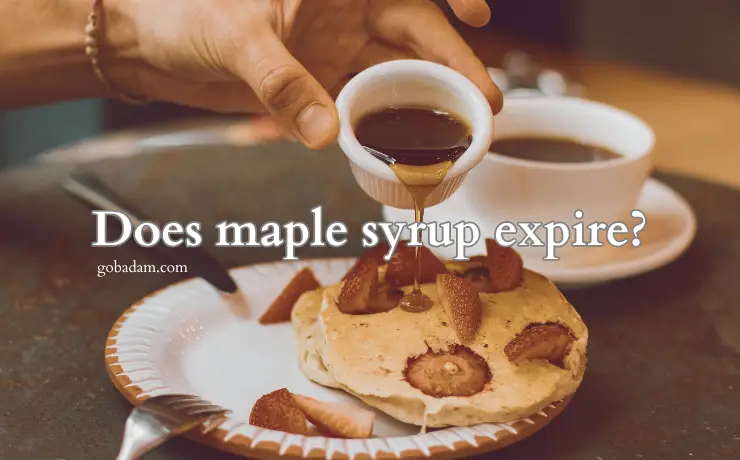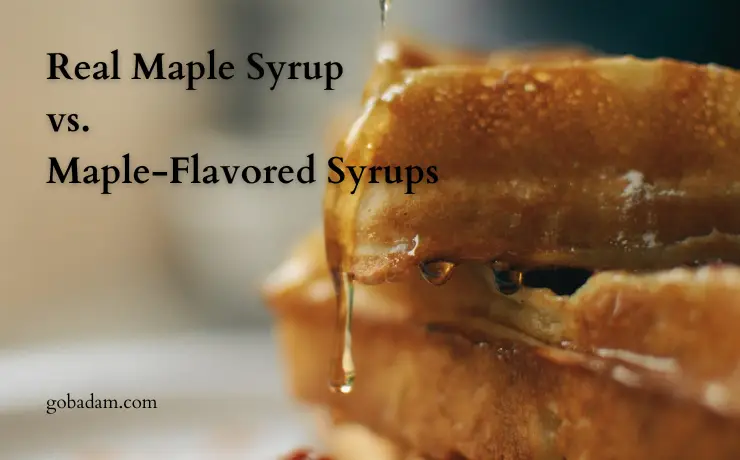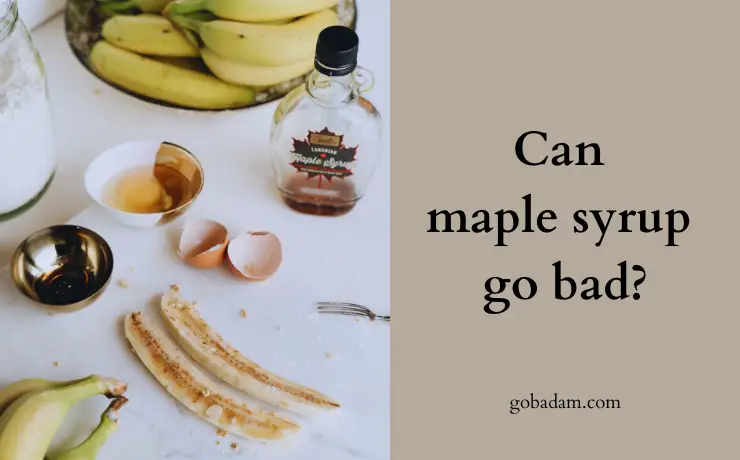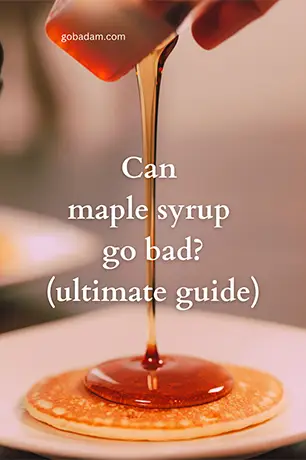Does maple syrup expire? It’s a question many breakfast aficionados and culinary enthusiasts alike grapple with. While the sweet nectar’s best-before date provides a hint, it’s the interplay of its natural composition, storage conditions, and packaging that truly dictates its longevity.
From the unmistakable presence of mold to subtle taste shifts, recognizing spoilage can be an art in itself. Whether you’re deciphering the nuances between Grade A and Grade B or pondering the preservation difference between genuine maple and its flavored counterparts, understanding the factors affecting maple syrup’s shelf life is essential.
Equally crucial is discerning how different containers, be it glass or plastic, might impact that coveted freshness, ensuring every drizzle is as delightful as intended. Let’s start with, can maple syrup go bad?
Does maple syrup expire?
Yes, maple syrup can expire. While it has a long shelf life due to its high sugar content, improper storage can lead to mold growth. Always refrigerate after opening and ensure the lid is tightly sealed to maximize freshness. Check for off-smells or mold before use.

Maple syrup uses and benefits
Maple syrups, which we can call a distant relative of molasses in terms of its natural content and benefits, has countless usage areas and benefits. Here is a brief of the most popular ones!
Maple syrup often likened to molasses for its rich natural content and benefits, boasts an impressive range of applications beyond the breakfast table. Praised for its minerals, antioxidants, and unique flavor profile, it’s a sought-after alternative to refined sugars in baking, marinades, and even cocktails.
From drizzling over oatmeal to being the secret ingredient in savory dishes, maple syrup is celebrated for its versatility. Its reputed benefits include anti-inflammatory properties, potential glycemic index advantages, and skin-enhancing qualities when used in natural beauty products. Truly, maple syrup is more than just a pancake topper—it’s a culinary and health superstar!
Maple syrup shelf life
Prior to being opened, maple syrup has a pantry shelf life of roughly a year. Once uncapped, authentic maple syrup benefits from refrigeration, maintaining its quality for another year. Conversely, opened containers of synthetic maple syrup variants can remain in the pantry, still retaining freshness for approximately a year.
You can always follow the manufacturer’s guidelines for your product. Because ingredients, added substances, production methods, storage conditions and more may affect the lifespan of maple syrup as well.

Spoilage Signs of Maple Syrup
Maple syrup, with its delectably sweet profile, is a favorite for many. However, like all natural products, it’s susceptible to spoilage over time. Here’s how you can identify when your maple syrup might be past its prime:
Mold Growth on Maple Syrup
The most conspicuous sign of maple syrup spoilage is mold. If you observe any fuzzy, floating growths or odd discolorations on the surface, it’s a clear indicator that your syrup has been compromised. This contamination can arise due to bacteria or fungi present in the air. Always ensure the bottle is sealed tightly after use and stored correctly to prevent mold development.
Maple Syrup Taste Alteration
While maple syrup has a distinct flavor that’s sweet with hints of caramel and vanilla, spoilage can alter this taste profile. If your syrup tastes off, sour, or has a fermented flavor, it’s likely that it’s started to degrade. This change can result from microbial activity or prolonged exposure to less-than-ideal storage conditions.
Grade A vs. Grade B for Maple Syrup
The grading of maple syrup primarily indicates its color and flavor intensity and is not directly linked to spoilage. However, it’s worth noting that Grade A syrups are generally lighter with a milder taste, while Grade B syrups are darker and more robust.
BUY 👉🏻 Maple syrup grade A (amber)
As such, any deviation from their original color or flavor might hint at potential spoilage. For instance, if a Grade A syrup darkens considerably or a Grade B syrup loses its rich flavor, you should be wary.
BUY 👉🏻 Maple syrup grade B (dark)
While maple syrup has a commendable shelf life, being vigilant for signs of spoilage is crucial to ensure you’re consuming a product that’s both safe and flavorful. Always prioritize proper storage and use within the recommended time frames to enjoy the best that this natural sweetener has to offer.

Storing Maple Syrup Right: Tips to Extend Its Shelf Life
Maple syrup, a liquid gold sweetener, is revered not just for its taste but also its natural composition. To savor its authentic flavor for as long as possible, proper storage is crucial. Let’s explore the best practices to ensure that your maple syrup remains fresh and delightful:
Plastic vs. Glass Bottles
There are several pros and cons of preferring different types of bottles while purchasing maple syrup. Let’s take a closer look at them.
Maple Syrup in Glass Bottles
Glass is a non-porous material, which means it doesn’t absorb flavors or odors. Storing maple syrup in glass bottles helps retain its original flavor without the risk of contamination from external smells. Additionally, glass is impermeable to oxygen, further extending the syrup’s shelf life.
Maple Syrup in Plastic Bottles
While convenient and often cheaper, plastic can be slightly permeable. This means there’s a potential, albeit minimal, risk of outside odors affecting the syrup. If choosing plastic, ensure it’s food-grade and store away from strong-smelling items.
Importance of Temperature
Temperature is an important thing to consider both before and after opening the maple syrups.
Before Opening: Before breaking the seal, store maple syrup in a cool, dark place, like a pantry. This helps preserve its natural flavors and prevent premature spoilage.
After Opening: Once opened, always refrigerate your maple syrup. The cooler temperature halts the growth of mold and bacteria, extending its usable life.
Importance of Light
Exposure to direct light, especially sunlight, can degrade the quality of maple syrup over time. The UV rays can break down its organic compounds, altering its flavor. Whether in glass or plastic, store your syrup in a dark place or in tinted containers that block out UV rays.
Seal Tightly
Ensure that the bottle or jug’s cap is always tightly closed. This prevents air, which can introduce contaminants, from getting inside.
Avoid Double Dipping: Introducing food particles into the syrup, like from a buttered piece of toast, can promote bacterial growth. Always use clean utensils when serving.
Bulk Storage
If you’ve purchased maple syrup in bulk, consider transferring it into smaller, airtight containers. This minimizes exposure to air each time you use it. There are many maple syrup containers in different sizes and types. Make sure that you check them.
SEE OFFER 👉🏻 Maple Syrup Containers
The longevity and taste of your maple syrup are closely tied to its storage conditions. By paying attention to the container material, protecting it from extreme temperatures and light, and maintaining a clean serving environment, you can enjoy the rich flavor of maple syrup for an extended period.

Maple Syrup vs. Other Sweetening Syrups
When it comes to syrup, a wide range of products come to mind, and some of these products have natural and some artificial ingredients. It is possible to say that maple syrup, which is used as a sauce in desserts and especially in pancake making, is a more natural product like Molasses or tahini.
Of course, maple syrup is also divided into varieties within itself, and it is useful to take a look at this diversity and get an idea.
Real Maple Syrup vs. Maple-Flavored Syrups
We can make a comparison between real and flavored maple syrups briefly. Let’s see the sources of flavor.

Maple Syrup Source
Real Maple Syrup: Derived directly from the sap of sugar maple trees. It undergoes a boiling process to achieve its characteristic consistency and flavor.
Maple-Flavored Syrups: Typically made from corn syrup or high fructose corn syrup, flavored with artificial maple essence or a mix of natural flavors.
Flavor and Texture
Real Maple Syrup: Offers a rich, authentic, and nuanced flavor with a smooth texture.
Maple-Flavored Syrups: Generally sweeter with a less complex flavor, often having a thicker consistency due to additives.
Nutritional Profile
Real Maple Syrup: Contains minerals, antioxidants, and natural sugars. Free from artificial flavors and preservatives.
Maple-Flavored Syrups: Often has added sugars, preservatives, and artificial flavors. Nutritionally less dense compared to real maple syrup.
Expiry and Preservation
Real Maple Syrup: Requires refrigeration after opening and can last for about a year. Its natural sugar acts as a preservative.
Maple-Flavored Syrups: Due to additives and preservatives, opened bottles can often be stored in the pantry for about a year.
In essence, while real maple syrup offers authenticity and natural benefits, maple-flavored syrups provide a more economical, albeit less genuine, taste experience. Choosing between the two depends on one’s flavor preference, nutritional considerations, and storage convenience.
Maple Syrup vs. Other Flavored Syrups
Maple syrup, derived from the sap of sugar maple trees, stands distinctively apart from other flavored syrups, which often use corn syrup as a base with artificial or natural flavors.
Rich in minerals like manganese and zinc, genuine maple syrup offers a unique, multifaceted taste compared to the sweeter, one-dimensional profile of many commercial syrups.
Additionally, while pure maple syrup is free from artificial preservatives and colors, its counterparts might incorporate these for longevity and visual appeal. In culinary applications, the versatility of maple syrup is evident as it complements both sweet and savory dishes, whereas other syrups are typically reserved for desserts and beverages.
Here are some sweetening syrups that you may interested in 👇🏻
Frequently Asked Questions About Does Maple Syrup Expire
Here I gathered up some top questions about maple syrup going bad, storage tips, and more.
Does maple syrup need refrigeration after opening?
Yes, to maintain freshness and prevent mold, always refrigerate opened maple syrup.
How does real maple syrup differ from flavored syrups?
Genuine maple syrup is derived from sugar maple tree sap and offers a rich, complex flavor, while flavored syrups often use corn syrup with artificial or natural essences.


